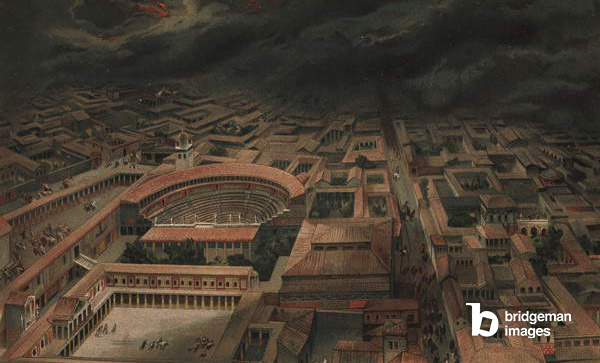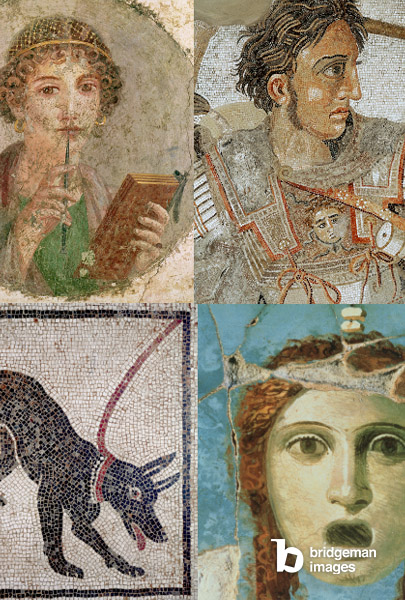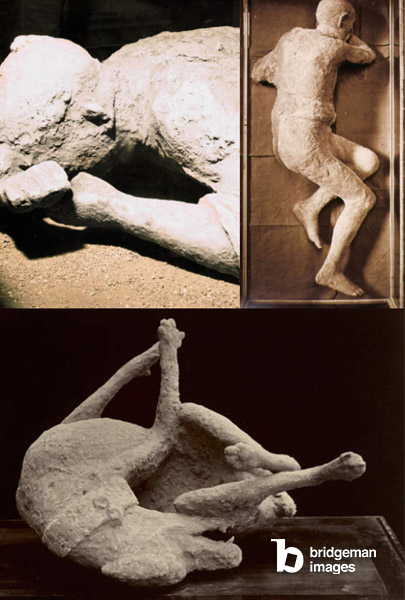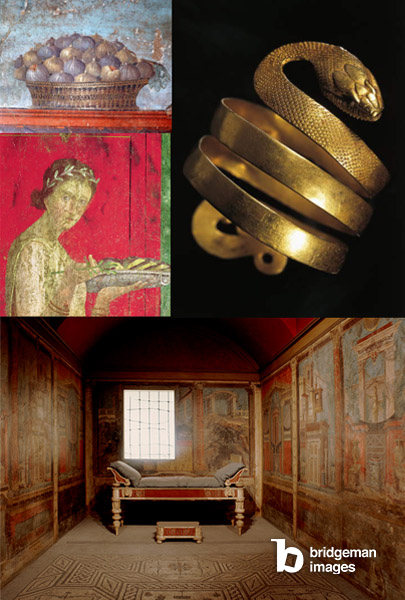Published 18/12/2019
Your visual guide to Pompeii in 79 A.D.
Bay of Naples, 79 A.D. Mount Vesuvius erupted in one of the deadliest volcanic eruptions in European history (witnessed and documented by Pliny the Younger) ultimately releasing 100,000 times the thermal energy of the Hiroshima-Nagasaki bombings.

See more images and pictures of Mount Vesuvius near Pompeii
Following the Vesuvius eruption, a thick layer of ash and debris covered everything in Pompeii. Because of its chemical makeup, the volcanic ash acted as a preservation blanket that, once removed, uncovered stunning mosaics and brightly coloured frescoes.

See more images and pictures of mosaics and frescoes in Pompeii
Impressively preserved casted bodies of young women, men, and even a dog, all Pompeian victims of the catastrophic eruption of Mount Vesuvius in 79 A.D.

See more images and pictures of people in Pompeii
Streets, houses, statues, road signs, everyday objects, beautiful jewellery, a plate of food, a comb: the symbols of the daily life of ancient Romans are forever crystallized in Pompeii by the Vesuvian eruption.

See more images and pictures of everyday life in Pompeii
Throughout the centuries, artists and authors were captivated by the tragic history and the dramatic end of Pompeii and they produced a wealth of painting, images and illustrations of everyday life and the last days of Pompeii.

See more images and pictures of artists' reconstruction of the last days of Pompeii
Ancient Pompeii images, pictures and videos - all content


